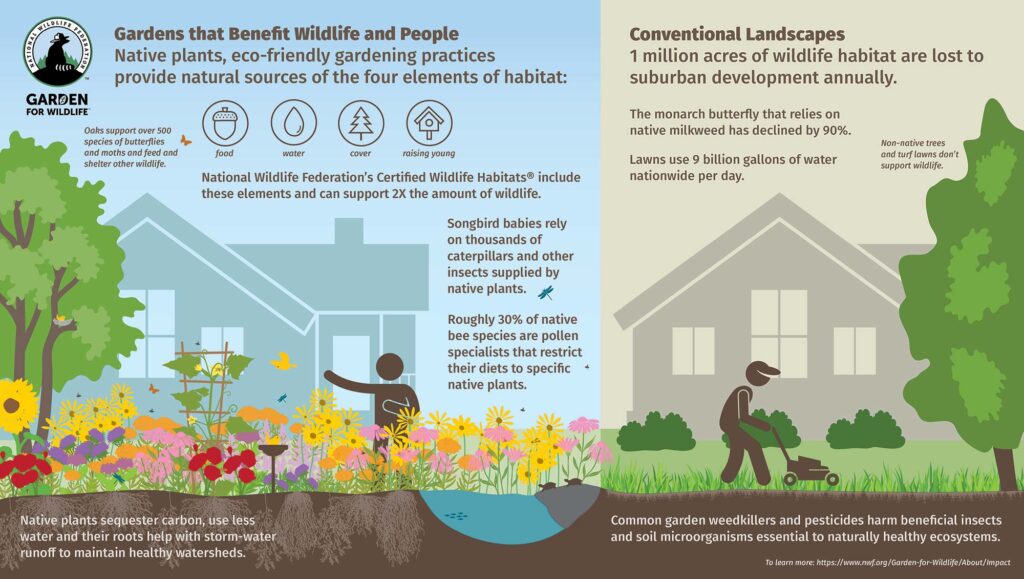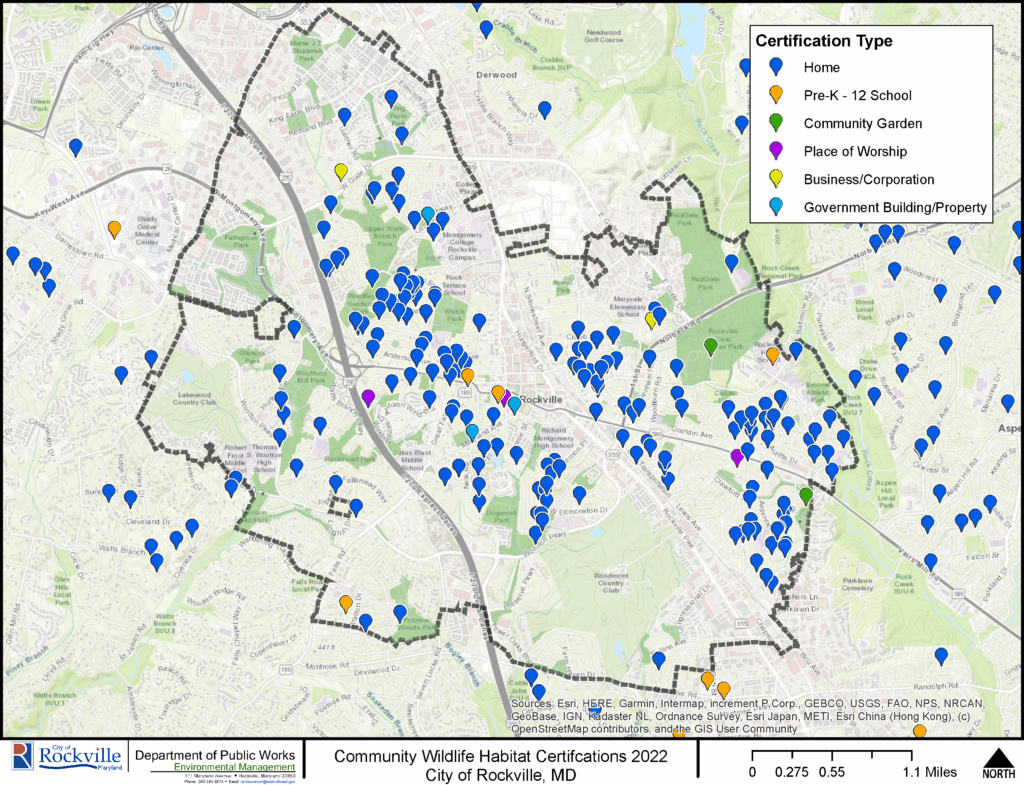Create a Backyard Wildlife Habitat
About Create a Backyard Wildlife Habitat

Every patch of restored native habitat, even small ones, helps create a connected habitat for birds and other wildlife. Greater habitat connectivity with a diversity of native plants means animals are able to travel between these patches to find food, shelter, and other needs that help them adapt and survive amid a changing climate. Learn the basics from the University of Maryland’s Climate-Resilient Gardening website.

Rockville is a Certified Community Wildlife Habitat
In 2016, Rockville was recognized by the National Wildlife Federation (NWF) as the 88th certified Community Wildlife Habitat in the United States. Over 200 residents and property owners helped achieve the certification by making their garden a safe haven for wildlife and pollinators by providing food, water, cover, and places to raise young.
Certify Your Greenspace
Join the effort by providing the five habitat elements below at your home, community garden, business, school, place of worship, or even a balcony. Learn more on NWF’s Habitat Essentials page, then certify your habitat to be counted as part of the city’s community certification.
- Food: All living things need to eat to survive, so food sources are a critical component of wildlife habitat.
- Water: All animals need water to survive, and some need it for bathing or breeding as well. Frogs may need a small pond, but even small water features help wildlife.
- Cover: Wildlife need places to take shelter from bad weather and places to hide from predators or hunt for prey. Shrubs, wildflower gardens, and rock walls all help to protect wildlife.
- Places to Raise Young: Wildlife need resources to protect and nourish their young. Nesting boxes for birds, milkweed for caterpillars, or ponds for frogs all create essential places to safely feed and nurture the next generation of their species.
- Sustainable Practices: Maintain your yard or garden in natural ways and limit the use of herbicides and insecticides.
Native Planting Without a Yard
Do you rent or live in an apartment, condo, or townhome? Here’s how you can help!
- Plant a native container garden for your patio or balcony.
- Plant natives in a community garden.
- Encourage your community organization to plant natives on common property.
- Partner with a local school to create a schoolyard habitat.
- Volunteer to help restore biodiversity in city parks with the Rockville Weed Warriors.
contact
Jump To
Contact
Public Works Department
Environmental Management Division
240-314-8870
environment@rockvillemd.gov
Hours
Monday – Friday
8:30 a.m. – 5 p.m.
